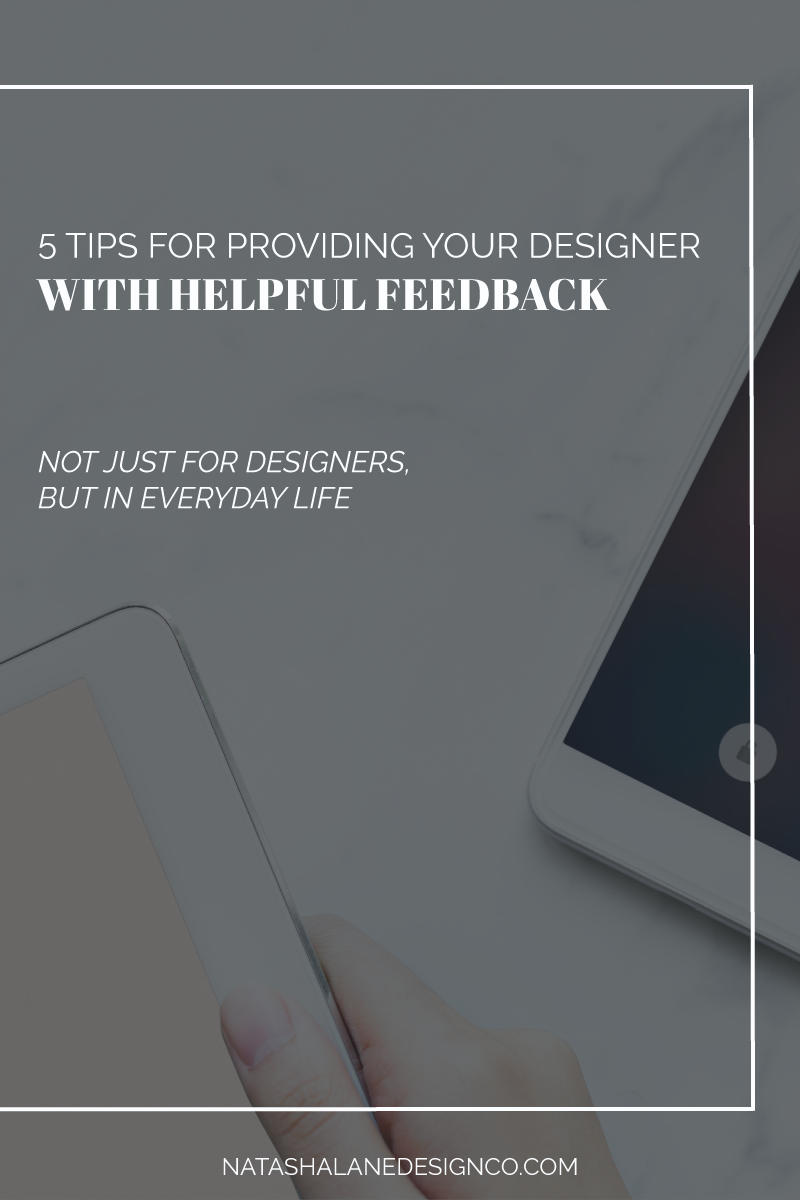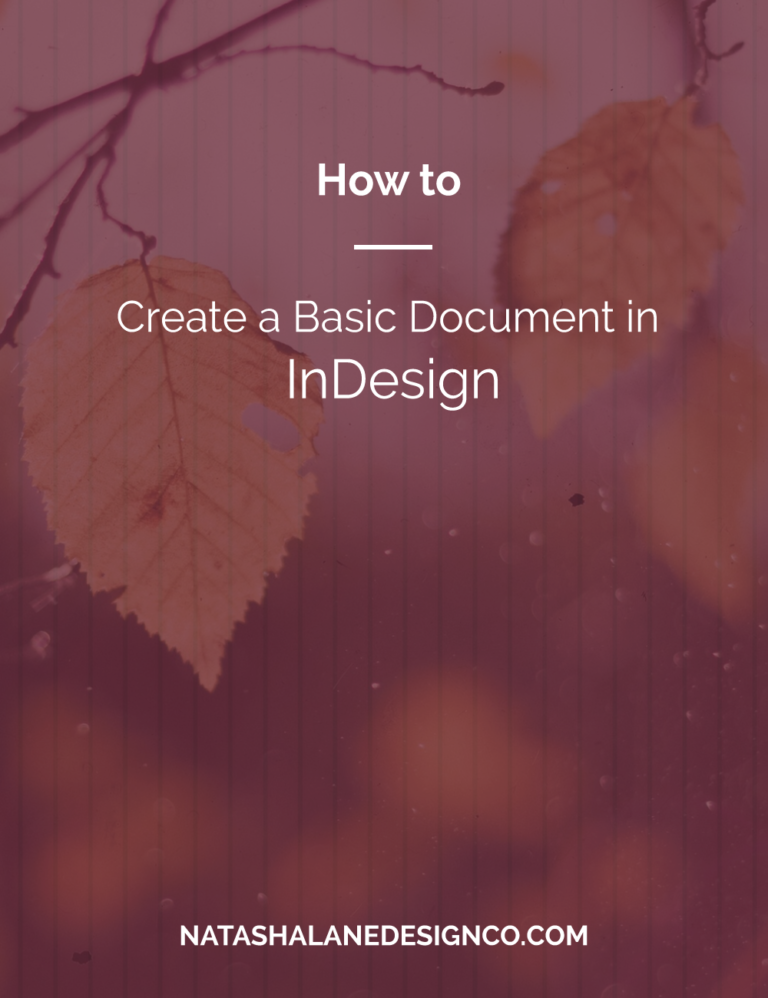
During the design process, there are always revisions from the client. It’s always great to give helpful feedback so that it will help the project run smoothly, quickly, and easily. I don’t think these tips apply only to designers. All these steps can apply to giving feedback in any industry. These are the tips I use for work or when I’m in mastermind groups and have to give my opinion. Here are the 5 tips for providing your designer with helpful feedback.
5 Tips For Providing Your Designer With Helpful Feedback
01. When you’re listing revisions use bullet points or numbers.
This is something I do all the time. I like to keep things clean and concise. I wouldn’t say I’m a neat freak, nevermind I am. I mean even the mess on my desk is organized in some way. It just looks messy.
Creating bullet points and numbers makes everything look clean and organized. For example, look at this blog post. All the tips are numbered and separated. If I didn’t add the numbers then it would just be one big blob. No one wants to read things that look cluttered and messy.
Another reason to keep things numbered is that I don’t want to miss any feedback. What if I read through the whole email and accidentally miss something? I’ve received long emails from family and friends who don’t organize their emails into bullet points. It just looks like one big mess and I have missed things because everything was jumbled together.
No matter what industry you’re in, it looks professional to list things in bullet points and numbers. If you’re emailing your family and friends, that would be nice too.
Example:
- I don’t like the navigation menu in the center.
- The text looks too small to read.
- Can we try a different color?
02. If you’re giving different types of feedback, break them up into sections, or different paragraphs.
Breaking up your feedback into sections and paragraphs makes it easier and cleaner to read your feedback. Really, this a must when writing any type of email. Even though this is something we learn as early as elementary school, I think it’s something that we just toss away as we get older because it’s a hassle.
When I was a kid, we had military-like chores because my dad was in the army. One of the chores I hated to do was picking my 5 outfits every Sunday and ironing them. I always swore that as soon as I moved out, I would never iron again. Well, when I moved into the dorms at age 18, I never ironed anything. No matter how wrinkled my clothes were, I refused.

That lasted for about 4 years. After I graduated and started working, of course, I started ironing my clothes again (or at least hang my clothes up as soon as they came out the dryer so that they wouldn’t be wrinkled). My point is, I understand that some people want to rebel, but if you’re writing professional emails, use paragraphs.
Side rant about a friend…
I have a friend that I use to edit blogs for. I had to give up because she NEVER used paragraphs. Every time she sent her blog post to me to ask for my thoughts, the perfectionist in me HAD to create paragraphs after each thought and create headers for each section.

The content of her blog posts was interesting, but I couldn’t get through the long blob of text. No matter how interesting or helpful her blog post is, her readers weren’t going to read it. The point is using paragraphs is important no matter what you’re writing.
03. If you have different types of feedback, use headers.
Headers make everything look neat and more organized. It makes it easier to show different suggestions for different elements. For example Navigation suggestions for revisions on the navigation of the website or Business card for revisions on the business card.
For Example:
Navigations suggestions
- I don’t like the navigation menu in the center.
- The text looks too small to read.
- Can we try a different color?
Business card
- The phone number is wrong.
- I want my name to be bigger.
- I don’t want my title shown.
If the headers weren’t there, I wouldn’t know what text was too small or what phone number was wrong.
04. Be as specific as you possibly can.
Try to get as detailed as possible because I don’t want to guess wrong.
For example:
Navigations suggestions
- I don’t like the navigation menu in the center, can we move it to the right.
- The text looks too small to read.
- Can we try a different color? Maybe we should try the color blue.
Business card
- The phone number is wrong, it’s 000-000-0000.
- I want my name to be bigger.
- I don’t want my title shown.
In the above example, I added clearer details, like for the navigation menu, instead of saying I didn’t like it in the center, I suggested to move it to the right. Instead of saying ‘Can we try a different color?’, I suggested we try the color blue.
05. If there is more than one person giving feedback, have only one liaison.
If there is more than one business owner, then I’m sure that everyone wants to include their input. If everyone sends their feedback then it can get confusing. My first suggestion is to have a meeting. A meeting is important because what if everyone has conflicting thoughts? During the process of the meeting, you can vote and come to an agreement on different revisions.
If you can’t have a meeting, then get on slack, messenger, or start an email chain with each other. Write down all your revisions and share your thoughts until you come to an agreement. You can follow the above feedback tips to keep everything organized. (See how these tips can be used in everyday life :))
The next suggestion is to have only one liaison who emails all the revisions to the designer. That person can write down or copy and paste everyone’s ideas and send it to the designer. This way, everything is organized and everyone’s suggestions were voiced.
For the lazy readers who like to skim like me

5 Tips For Providing Your Designer With Helpful Feedback
- When you’re listing revisions use bullet points or numbers.
- If you’re giving different types of feedback, break them up into sections, or different paragraphs.
- If you have different types of feedback, use headers.
- Be as specific as you possibly can.
- If there is more than one person giving feedback, have only one liaison.
Again, these tips can be used when emailing anyone. They make emails look more professional and help your readers easily digest your message.
I feel like I ranted a little, sorry about that. Are there any email etiquette suggestions that you have or things you find annoying that people do in their emails? Let me know in the comments below.
-Paigon | Natasha Lane Design Co.










